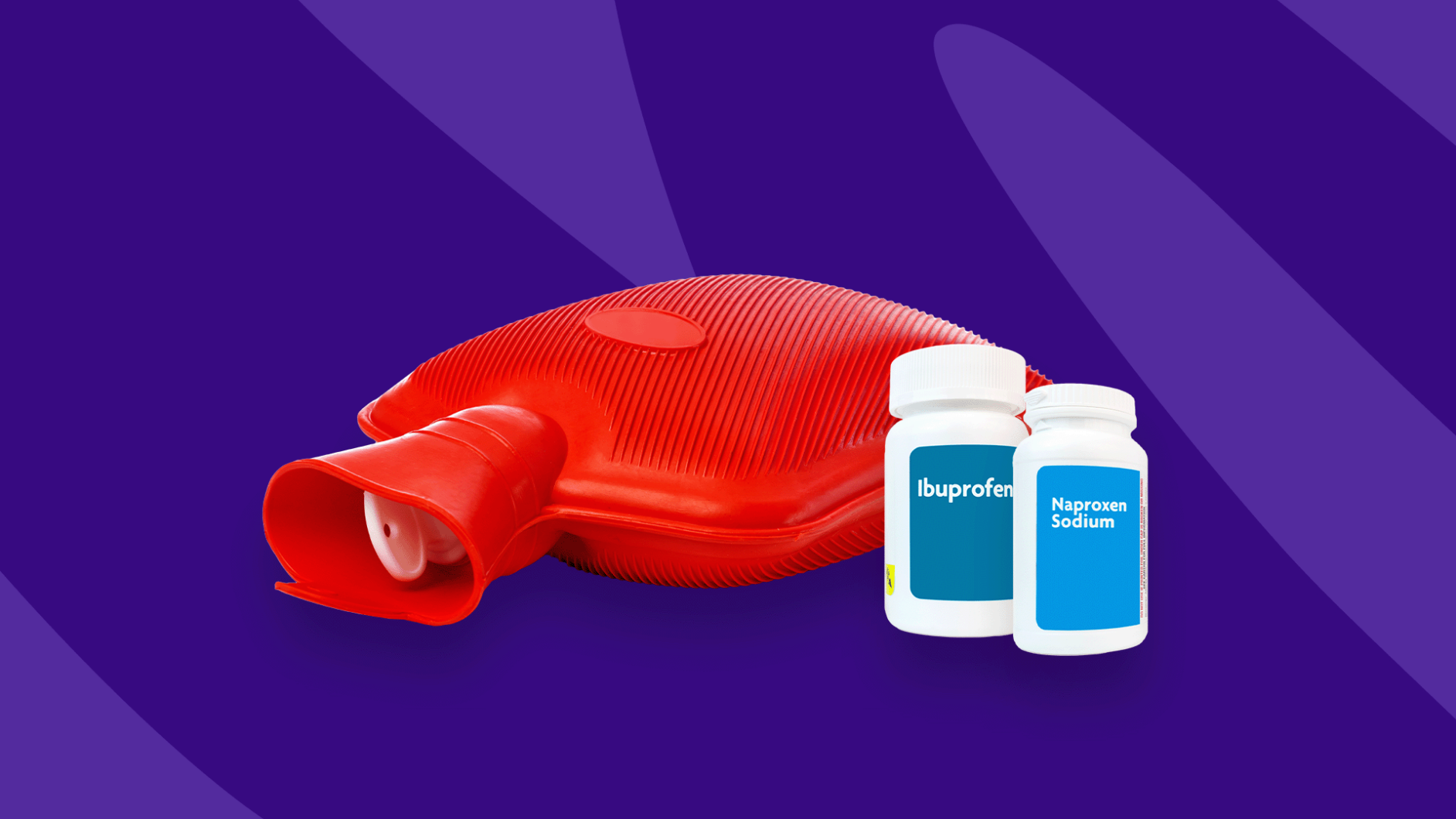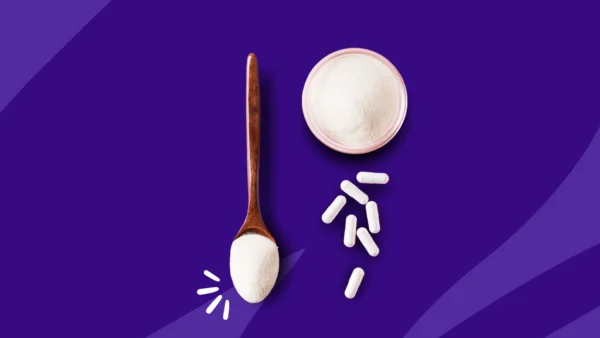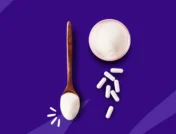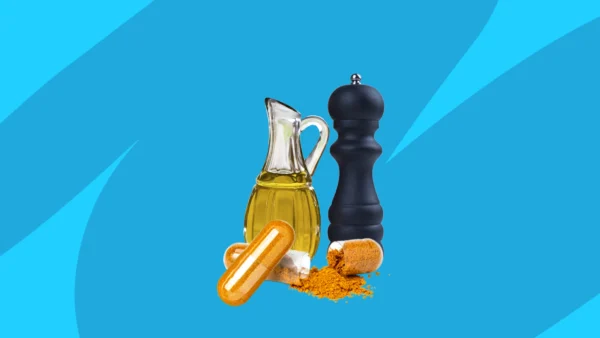Many women experience some kind of pain or discomfort when they menstruate, whether it’s in the form of headaches, lower back pain, or an upset stomach. But of all the usual aches and pains associated with menstruation, period cramps may be the most common: More than half of all menstruating women have cramps right before or during the first few days of their period. When period pain is severe enough to interfere with your life, that’s known as dysmenorrhea.
Menstrual cramps are caused by the same muscle contractions that prompt the uterus to shed its lining and initiate your period. Those muscle cramps can vary from mild to severe, however, and many women find it hard to go about their daily lives without taking something to relieve their symptoms.
In general, taking over-the-counter (OTC) pain relievers like acetaminophen and ibuprofen are the most effective way to treat painful periods. But there are other remedies, too, including herbal teas and supplements. Here are some of the things you can try to relieve cramps during your period.
Over-the-counter (OTC) medicine for period cramps
Two types of OTC pain relievers work well to relieve symptoms of period cramps: naproxen and ibuprofen, says Monte Swarup, MD, FACOG, an Arizona gynecologist and founder of HPV Hub. Naproxen is usually sold as brand-name Aleve, while ibuprofen is sold as either Advil or Motrin.
Both of these medications are nonsteroidal anti-inflammatory drugs (NSAIDs) with relatively low-risk profiles, meaning they’re safe for most people to take as directed. People with certain GI disorders, people with kidney or liver disease, and people with a history of heart disease may not be able to safely take NSAIDs, however.
People who can’t take NSAIDs may also find some relief from menstrual pain by taking Tylenol (acetaminophen), which is a pain reliever and fever reducer but not an NSAID. However, NSAIDs are generally considered the more effective option. According to a comprehensive review of studies and clinical trials published in the Cochrane Database of Systematic Reviews, NSAIDs were better for period pain relief than a placebo and also more effective than acetaminophen.
According to that same review, the reason NSAIDs work better for period pain is because they target that pain at its source. Women with more severe menstrual cramps usually have higher levels of hormones called prostaglandins, which are responsible for causing uterine cramping during your period. NSAIDs block prostaglandin production, leading to less cramping.
Herbal remedies for period cramps
There may be some benefit to treating period cramps with certain herbal remedies added to your diet. Although herbal medicine may be an effective way to relieve menstrual cramps, quality research is lacking, so evidence is limited.
Anyone considering supplements should discuss their plans with their primary care provider to make sure they are safe. If you’re considering using herbal remedies to treat your period cramps, here are some of the more common ones you might want to ask your provider about:
- Chamomile: A study on the efficacy of chamomile tea for treating premenstrual syndrome (PMS) found that chamomile tea has antispasmodic and anti-inflammatory effects that may reduce cramps. However, it’s been difficult for researchers to pinpoint precisely how much chamomile is needed and in what form it should be (i.e., capsule versus tea) in order for it to be effective.
- Ginger: According to Melissa Dean, a licensed midwife and founder of Casa Natal Birth and Wellness Center in San Francisco, California, supplementing with ginger capsules may be a reliable way to relieve cramps. A recent systematic review indicated that taking 75 to 2,000 milligrams of ginger daily at the beginning of each menstrual cycle effectively reduced painful periods.
- Cinnamon: Research suggests that cinnamon is a safe and effective way to treat period pain. It may be even more beneficial when combined with fennel and ginger. Similar to chamomile, however, it’s unclear how much cinnamon is needed to reap the benefits and whether capsules are better than tea.
- Vitamin D: Dean also says taking 2,000 to 3,000 IU of vitamin D daily may reduce cramps. When taken at recommended doses, Vitamin D isn’t associated with any notable side effects.
- Chaste tree: Finally, Dean says that chaste tree, or vitex, can be taken daily to regulate hormones and reduce monthly period pain. Chaste tree has a history of use within traditional medicine and likely doesn’t have many adverse side effects, but it hasn’t been well-studied in research settings. It may not be safe for women with liver disease or who take hormonal birth control or hormone replacement therapy. The recommended dosage for treating period pain is between 20 and 100 milligrams per day.
Best foods for period cramps
There’s no evidence that any specific foods can relieve period cramps on their own, but Dr. Swarup says that diets high in foods that reduce inflammation, in general, may lead to fewer cramps. In other words, if you regularly eat plenty of vegetables, fruits, whole grains, lean protein, and legumes, you may have less inflammation overall.
According to Melissa Dean, this is because inflammatory prostaglandins are at the root of period cramps. Disrupting that inflammation can help to reduce period pain.
You can do this most easily by eating an anti-inflammatory Mediterranean diet, Dean says, as well as consuming foods that contain linolenic acid, such as salmon, pumpkin flax, sesame, and sunflower seeds. Linolenic acid is a fatty acid shown in some studies to reduce symptoms of PMS cramps.
Birth control for period cramps
For many women, period cramps can be managed with OTC pain relievers, dietary changes, and home remedies like herbal treatments. However, some women still don’t find relief with these strategies and experience menstrual cramps severe enough to interfere with their quality of life.
In these cases, there are other treatments available, including the use of hormonal birth control. Hormonal birth control thins the uterine lining and decreases prostaglandin levels, leading to fewer uterine contractions and less painful cramping during periods. Dean says severe cramps that affect someone’s quality of life are often treated with an estrogen-progestin hormonal contraceptive, such as combined estrogen-progestin oral pills, transdermal patches, or vaginal rings.
However, Dean advises that treating cramps is usually only a temporary solution for an underlying problem.
When to see a healthcare provider
Normal menstrual cramps shouldn’t be so severe you can’t go to work or school. According to Dean, you should see a healthcare provider to discuss your period cramps any time that you feel your quality of life is impacted by the pain. You should also let your provider know if your menstrual periods come with heavy or intense menstrual bleeding, especially if you’re frequently soaking through pads or tampons.
Finally, if you’re experiencing menstrual-like pain in your pelvis, abdomen, or lower back even when you don’t have your period, you should also make an appointment to be evaluated by a healthcare provider. You could be pregnant or have an infection, an abnormality like a polyp or uterine fibroid, or a chronic health condition such as polycystic ovarian syndrome (PCOS) or endometriosis.
Sources
- Dysmenorrhea: Painful periods, American College of Obstetricians and Gynecologists (2020)
- NSAIDs (nonsteroidal anti-inflammatory drugs, Cleveland Clinic (2023)
- Nonsteroidal anti‐inflammatory drugs for dysmenorrhoea, Cochrane Database of Systematic Reviews (2015)
- Prostaglandins, You and Your Hormones (2019)
- Effect of medicinal herbs on primary dysmenorrhoea – a systematic review, Iranian Journal of Pharmaceutical Research (2014)
- Comparison of herbal medicines used for women’s menstruation diseases in different areas of the world, Frontiers in Pharmacology (2021)
- Efficacy of chamomile in the treatment of premenstrual syndrome: A systematic review, Journal of Pharmacopuncture (2015)
- Efficacy of ginger for alleviating the symptoms of primary dysmenorrhea: A systematic review and meta-analysis of randomized clinical trials, Pain Medicine (2015)
- The effect of Cinnamon on primary dysmenorrhea: A randomized, double-blind clinical trial, Complementary Therapies in Clinical Practice (2018)
- Efficacy of herbal medicine (cinnamon/fennel/ginger) for primary dysmenorrhea: a systematic review and meta-analysis of randomized controlled trials, Journal of International Medical Research (2020)
- The effect of vitamin D on the severity of dysmenorrhea and menstrual blood loss: a randomized clinical trial, BMC Women’s Health (2023)
- Chaste Tree, LiverTox: Clinical and Research Information on Drug-Induced Liver Injury (2023)
- Essential fatty acids for premenstrual syndrome and their effect on prolactin and total cholesterol levels: a randomized, double blind, placebo-controlled study, Reproductive Health (2011)
- Patient education: Painful menstrual periods (dysmenorrhea) (Beyond the basics), UpToDate (2023)
- Period Pain, MedlinePlus (2016)











